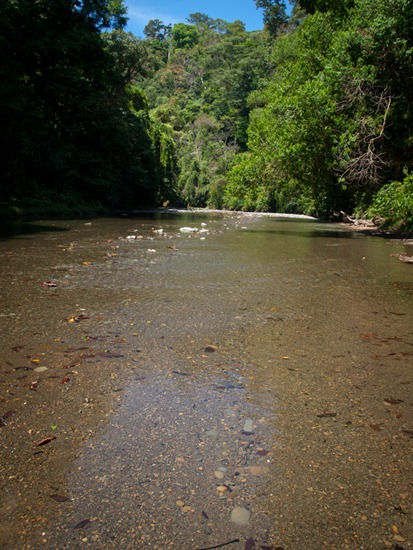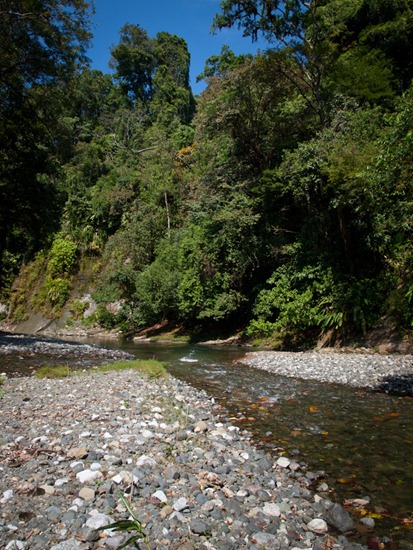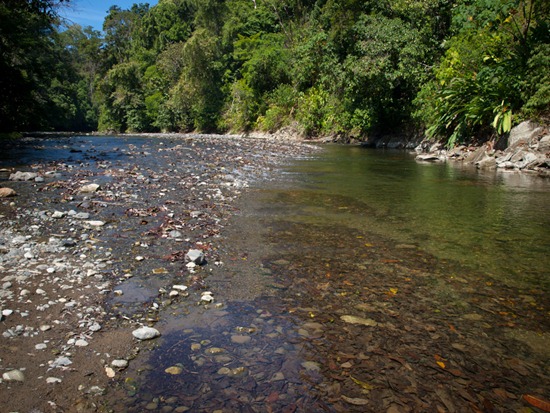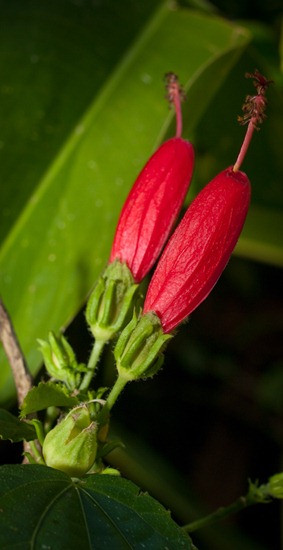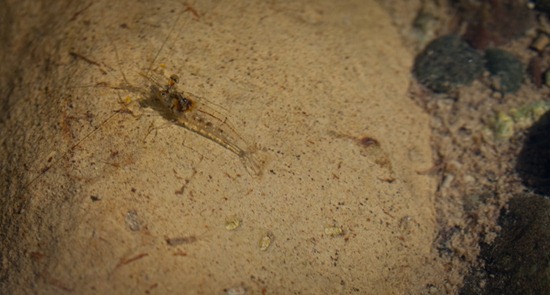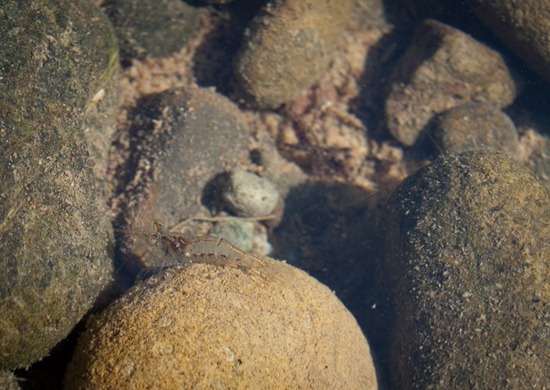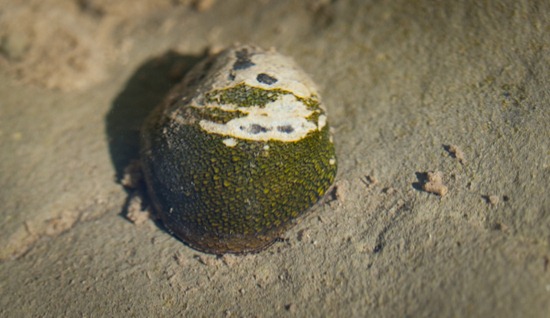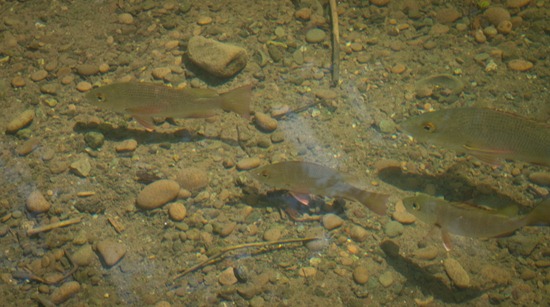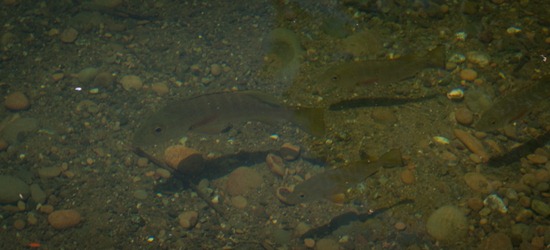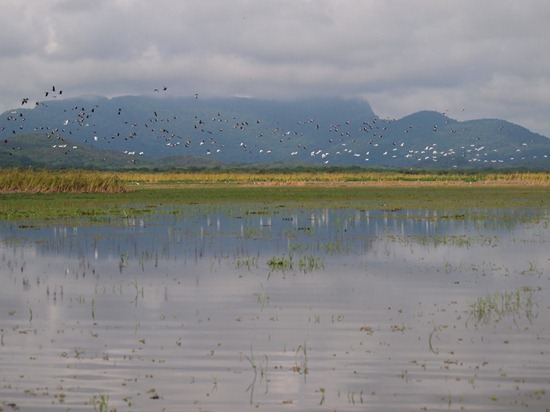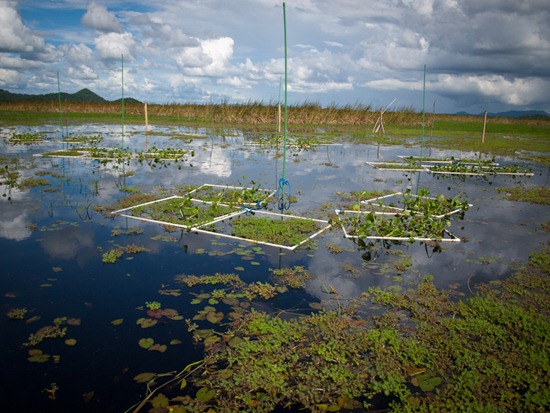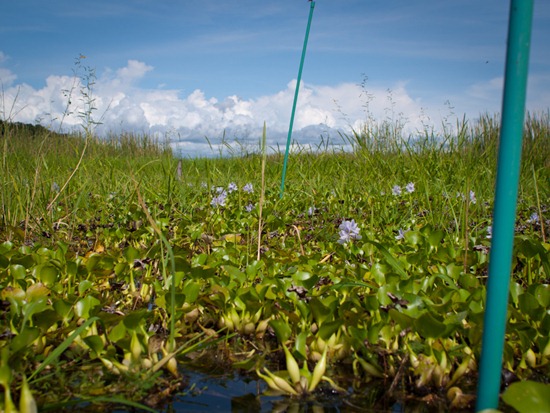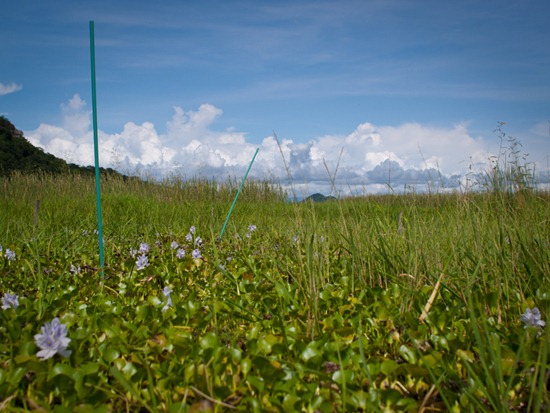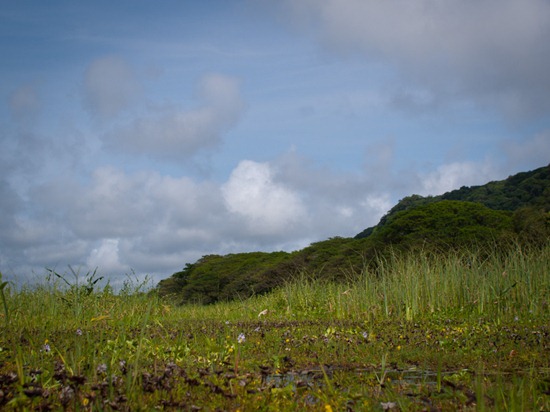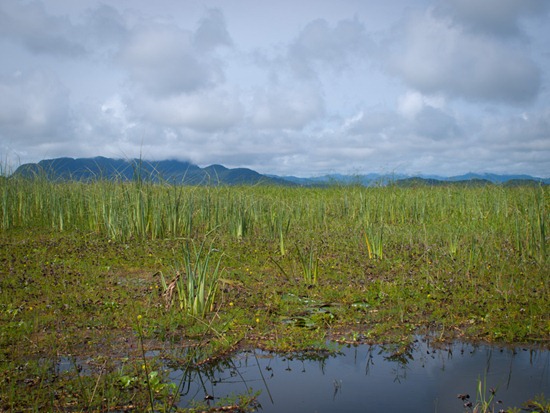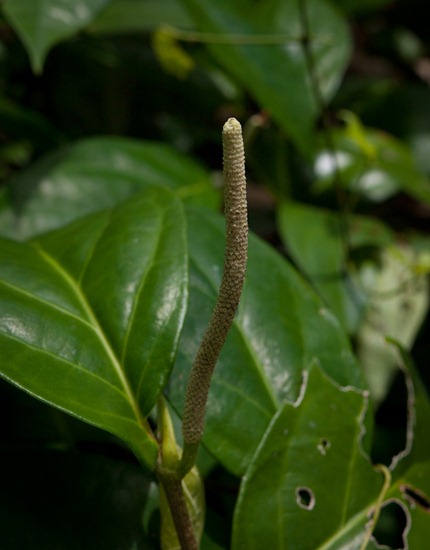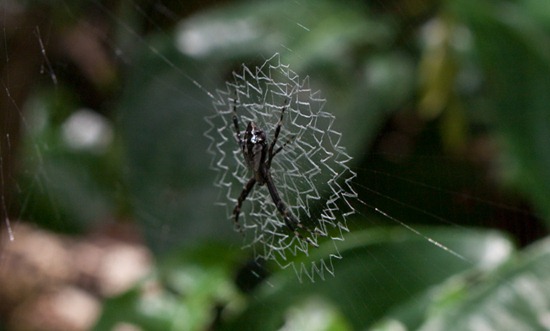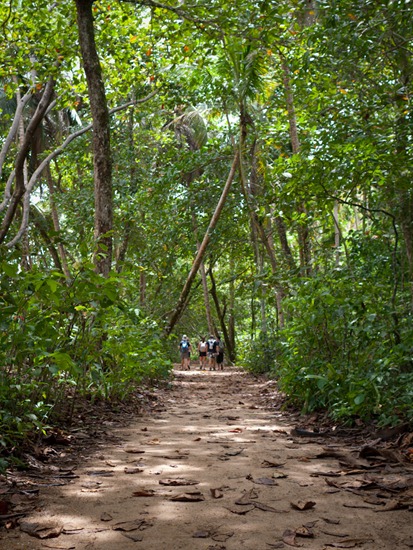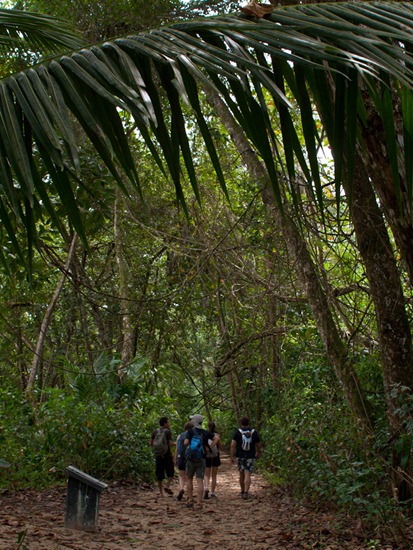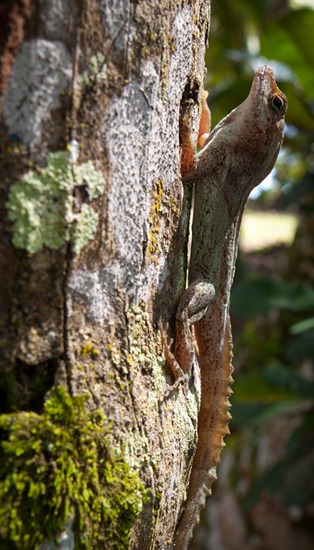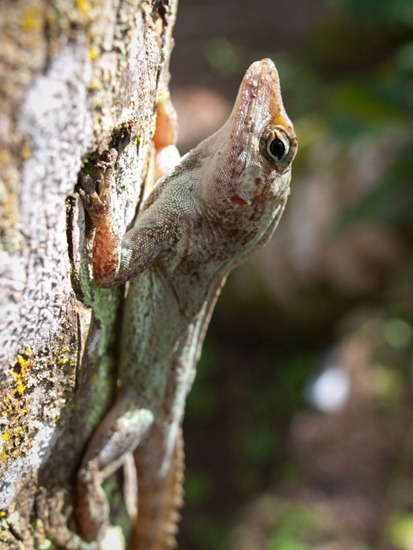Some images from Rio Claro, Corcovado National Park. Hiking up this stream to sample fish again or otherwise research stream ecology is a must for me.
Tag Archives: Costa Rica
A Costa Rican Mallow
Invertebrates, underwater
These glass shrimp (I can’t recall the species) are extremely common in Osa streams, as are the Neritid snails below.
I had to take these photos from the surface, since I don’t have an underwater camera, but I think it would be extremely cool to see some underwater, macro-photography (like that over at Myrmecos) of macroinvertebrates.
Pargo in Rio Claro
Snapper (Lutjanidae – mostly Lutijanus spp.) inhabit near-ocean reaches of streams throughout Costa Rica. They are generally marine, but will often feed in freshwater and it seems that they dominate the large, fish predator group in Costa Rican streams as a result. There are at least three common species in the Osa Peninsula, where these were found, including Lutijanus novemfasciatus (the black snapper or Pacific cubera snapper). Last year, we caught L. novemfasciatus in Rio Madrigal and recorded a new species for Osa.
I’m unsure of the identification of those below, but they were photographed in Rio Claro, near the Sirena Field Station in Corcovado National Park
Open water
Same view, different depth
Vista Puente
Piper
The diverse Piper genus (Piperaceae) is used as a model system for a variety of ecological studies, including work done by Dyer at La Selva on tritrophic interactions (i.e., plant [Piper] – caterpillar – parasitoid). It’s also economically important – we grind the dried fruit or seed to produce pepper.
Here is a flower spike of a common species in Cahuita –I have no clue which – and a spider with stabilimentum that was often present with patches of Piper.
Path at Cahuita
Ctenonotus cristatellus
This Polychrotid is a non-native to Costa Rica but is extremely common in parts of the Caribbean coast. It’s native to various Caribbean islands, such as Puerto Rico and Hispanola, and this one was caught outside Cahuita. The males not only develop a large, colorful dewlap, but also a crested tail, giving it the species epithet cristatellus. It’s fairly large and relatively distinctive in shape, similar to Norops capito.
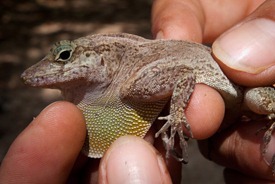 |
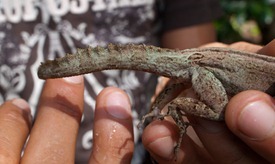 |

